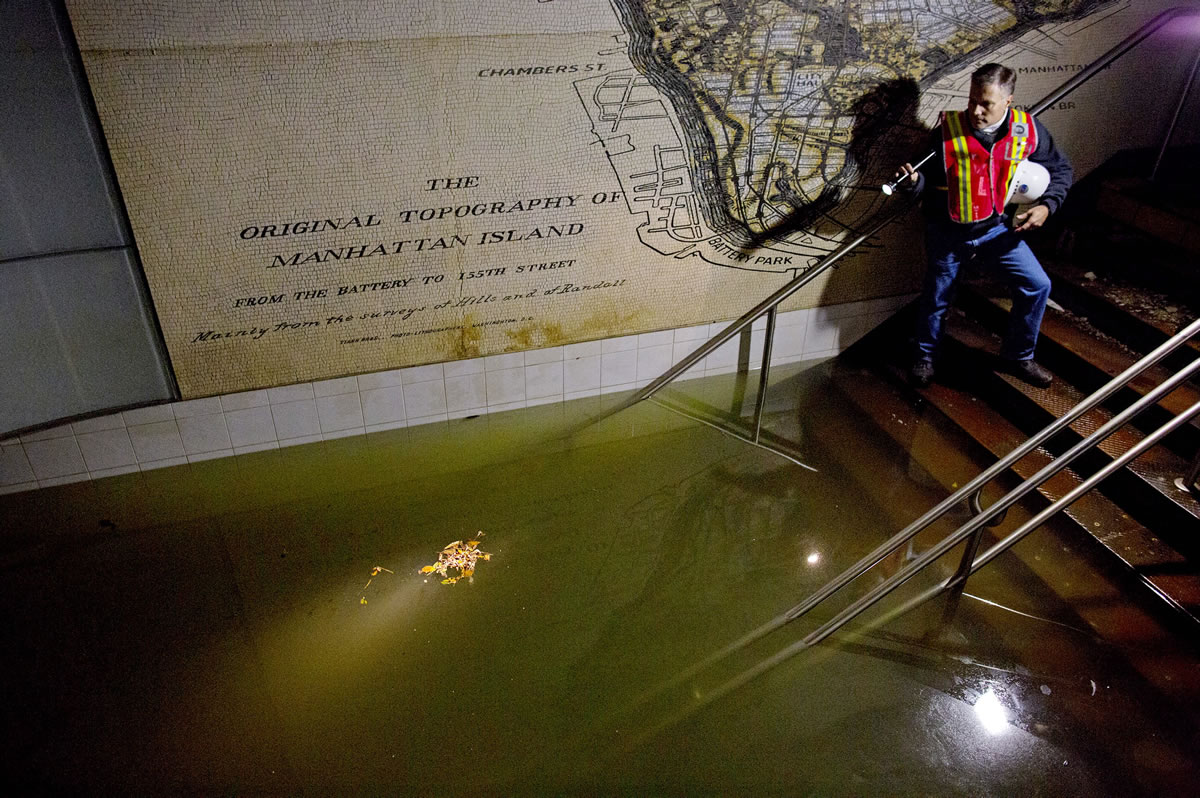NEW YORK — Coastal communities should assume floods are going to happen more frequently and realize that spending now on protective measures could save money later, according to a report issued by a presidential task force charged with developing a strategy for rebuilding areas damaged by Superstorm Sandy.
Most of the report’s 69 recommendations focus on a simple warning: plan for future storms in an age of climate change and rising sea levels. It calls for development of a more advanced electrical grid and the creation of better planning tools and standards for storm-damaged communities.
“If we built smart, if we build resilience into communities, then we can live along the coast. We can do it in a way that saves lives and protects taxpayer investments,” said Secretary of Housing and Urban Development Shaun Donovan, who discussed the report Monday with New York City Mayor Michael Bloomberg. Donovan was appointed chairman of the Hurricane Sandy Rebuilding Task Force by President Barack Obama.
Some of the group’s key recommendations are already being implemented, including the creation of new flood-protection standards for major infrastructure projects built with federal money and the promotion of a sea-level modeling tool that will help builders and engineers predict where flooding might occur in the future. It strongly opposes simply rebuilding structures as they were before they were devastated by October’s historic storm.
The task force also endorsed an ongoing competition, called “Rebuild by Design,” in which 10 teams of architects and engineers from around the world are exploring ways to address vulnerabilities in coastal areas.
“We’re always going to have people, I think, want to live in areas that are problematic from an environmental point of view,” Bloomberg said at Monday’s news conference, which was held overlooking a Brooklyn water treatment plant that stayed online during the storm.
“We still want to leave it to you, the individual, to make your decisions, but the federal government has some economic incentives,” he said, noting that rescue crews are needed to save flooded-out residents, “because if you do get in trouble, we’re going to have to come to your aid anyway.”
Earlier this year, Bloomberg unveiled a sweeping $20 billion proposal that would create floodwalls and marshes and stormproof vulnerable neighborhoods. It is not clear how much funding the city will receive to enact the changes.
The presidential task force report didn’t delve deeply into what types of infrastructure might be best suited to protect the shoreline. It endorsed a greater use of natural barriers such as wetlands and sand dunes, but it said better tools were needed to help planners evaluate what works and to quantify the long-term benefits of those types of projects.
It said the government should find ways to encourage the private sector to develop fuel distribution and telecommunications systems that are less likely to be crippled by extended power outages. After Sandy, drivers in New York and New Jersey had problems finding gas stations that still had fuel because of a series of problems that rippled through the distribution system. Cellphone networks were snuffed out in some areas because of equipment that lacked adequate battery power, or other backup electrical supplies.
A large section of the report dealt with how federal authorities should respond once a storm has struck.
Among the recommendations:
• Federal agencies should streamline their review processes for reconstruction projects related to Sandy. It said that if standard government permitting timelines are applied, some rebuilding projects might have to undergo redundant reviews by multiple agencies and could be held up as long as four years. Some of those reviews will be consolidated to save time and money, the task force said.
• The Small Business Administration’s disaster loan program, which gave $3.8 billion in low-interest loans to storm victims, performed better than it did during Hurricane Katrina but should be tweaked further.
• Federal mortgage policies should be revised so homeowners can get insurance checks faster.
On one vital issue related to insurance, the task force had no easy solution.
It noted that because of reforms to the financially distressed National Flood Insurance Program that began before the storm, many thousands of people who live in low-lying areas will likely see huge premium increases if they don’t lift their homes up on pilings. The task force said that for many homeowners, both options are unaffordable. It recommended further study of that dilemma.



